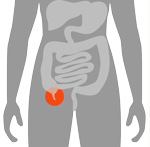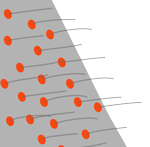Quirks of evolution
Expert reviewers
Essentials
- Random variation, heredity and natural selection are key mechanisms of evolution.
- Individuals with features or traits that function well in their local environment will be more likely to survive, passing on their genes to their offspring.
- Features or traits that are not detrimental to survival may persist, even if they no longer have a function or don’t serve their original purpose.
- Understanding the processes by which organisms evolved can help us make sense of apparently bizarre or quirky physical characteristics.
Some creatures seem perfectly adapted to their environment. Take the koala. Thanks to a specialised digestive system, it survives on very fibrous, low-nutrient and, to most animals, poisonous eucalypt leaves. Or the leafy seadragon of southern Australia. It’s a kind of seahorse which, thanks to a number of plant-like protuberances, looks exactly like a piece of floating seaweed. Not only does this make the seahorse invisible to potential predators but, when tiny shrimp take shelter in its leafy appendages (unwittingly mistaking it for a piece of greenery) the seahorse gets an easy meal.
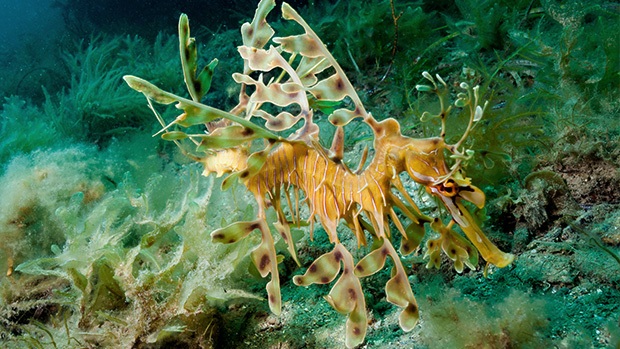
When we think of evolution (and perhaps as a result of overdosing on nature documentaries), it’s these kinds of animals that often come to mind. Such animals, we like to say, have ‘evolved’ to suit their surroundings.
Others, though, can have us scratching our heads. Like, what’s with wings on flightless birds? And why do men have nipples? Evolution is all about creatures gradually adapting to their environment, right? And doesn’t ‘survival of the fittest’ mean a move towards better and better adapted creatures? Couldn’t evolution have come up with a better solution? And why don’t these oddities simply disappear?
While at first glance it may seem counterintuitive, it’s precisely within the context of evolution that these apparently nonsensical ‘quirks’ begin to make sense. Let’s take a look.
Evolution 101
If you’re new to evolution, or just need a recap, here’s a quick crash course on how it all works.
Variation and heredity
There’s a huge amount of variation in the characteristics and traits of individuals within a species. You only need to look at your own family to see that even children of the same biological parents may be remarkably different in appearance and characteristics.
So, how do we account for this variation?
We all know that, when it comes to the creation of a new human life, it takes two to tango. For a baby to be created, we need the father’s sperm and the mother’s egg, each of which has a single set of chromosomes bearing our 23,000-odd genes (a genome). The embryo, and the adult it grows into, has two genomes in each cell. During fertilisation, the two cells fuse to become a single cell, containing genetic information from both parents. It’s the random mixing and recombination of the DNA of two organisms that results in the unique characteristics of their offspring, each child getting a different mix of genes from the mother and father.
Genetic variation happens through mutation—that is, random changes or copying errors in the DNA—caused, for instance, by exposure to chemicals or radiation. A gene may exist in many slightly different variants, called alleles. For a mutation to be passed on to the next generation it has to happen in the sex cells, that is, the sperm or egg. If changes happen in normal body cells, they are lost when the body dies.
Natural selection
Thanks to these processes, we end up with species within which individuals have different features. Some of these features will be more beneficial to animals living in a particular environment than others. For example, a digestive system that can cope with eucalypt leaves is going to be pretty useful to creatures, like koalas, living in Australia.
Animals with features that are most suited to their environment will be more likely to survive, and pass their genes on to their offspring. These characteristics are gradually passed down to future generations. This is ‘natural selection’.
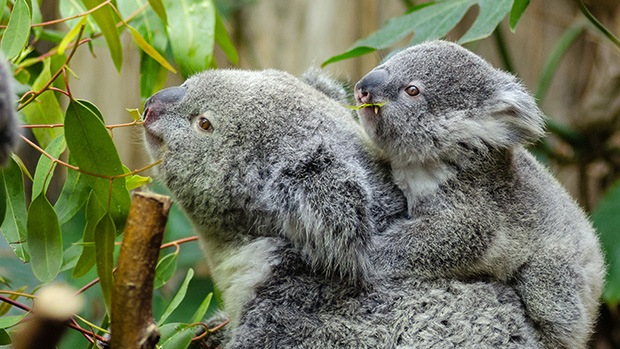
Perhaps the best known illustration of how natural selection works is the giraffe. Nineteenth-century naturalist Jean Baptiste Lamarck proposed that organisms acquired certain characteristics through use, with others disappearing through disuse. He mistakenly thought that the long necks of giraffes came about as a result of stretching for leaves high up in tall trees, and that these long necks were then inherited by their offspring. By contrast, a Darwinian theory of evolution posits that it was through random variation that some giraffes had longer necks than others. Thanks to their long necks, they were able to reach leaves high up in the trees in their environment. Because they could access food, the giraffes with longer necks were better able to survive and reproduce, with their offspring inheriting their long necks.
Since Darwin’s time, scientists have been able to trace the evolution of various organisms through fossils and via DNA sequencing. They are even starting to identify the precise gene mutations underlying particular changes, such as the change to a gene which resulted in the forelimbs of bats becoming wings.
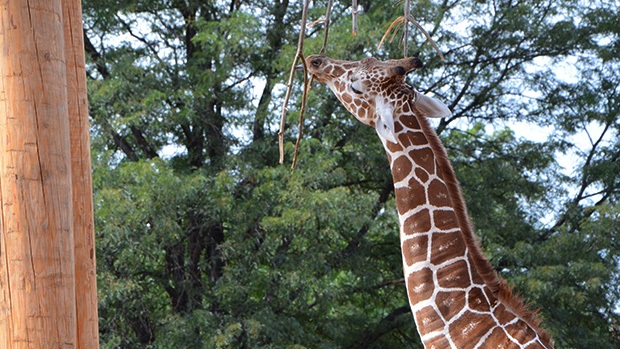
Not always a perfect solution
One misconception about natural selection is that, over time, evolution ‘selects’ the features of an organism that are most perfectly suited to its environment. The misunderstanding may be partly due to the term ‘natural selection’ itself as Alfred Russel Wallace (who, independently of Charles Darwin, conceived the theory of evolution through natural selection) once observed in a letter to Darwin. Wallace thought that the term implied ‘the constant watching of an intelligent “chooser” like man’s selection to which you so often compare it’ and that it suggested that ‘thought and direction are essential to the action of “Natural Selection”’. In other words, the term conjures up parallels with, say, a dog breeder ‘selecting’ for desirable traits in their animals. In fact, nature isn’t actually ‘selecting’ anything—natural selection is a process, not a conscious force. And there are good reasons why the process of natural selection may not always result in a ‘perfect’ solution.
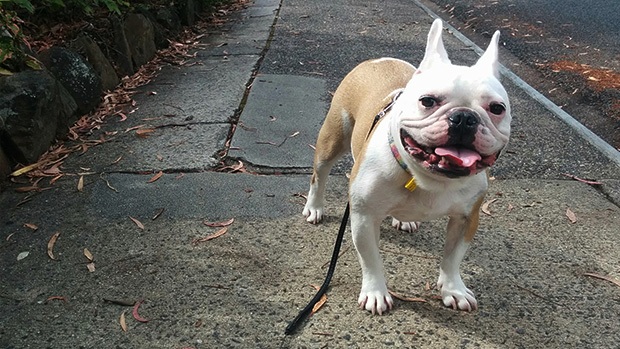
Firstly, selection can only act on the available genetic variation. A cheetah, for example, can’t evolve to run faster if there is no ‘faster’ gene variant available.
Secondly, the body has to work with the materials it already has. In the case of the giraffe, for instance, you’d think it’d make most sense for the nerve that goes from the voice box to the brain to take the most direct route—a length of around 10 centimetres. But because the giraffe’s body plan was established in an ancestor that had no neck, the nerve goes all the way down the neck, around the heart and back again—a distance of 4 metres! New arrangements can only use the parts at hand, as evolutionary biologist Steven Jay Gould illustrated with another example: the panda’s ‘thumb’—an extra (sixth) digit which is constructed from an enlarged radial sesamoid, normally a small component of the wrist (see his book ‘The panda’s thumb’).
Accidents and leftovers
Armed with these understandings about evolution, let’s return to those quirky traits and features with which we started.
Non-adaptive features
First, it’s important to recognise that not all of an organism’s features are due to adaptation. For instance, some non-adaptive, or even detrimental, gene variants may be on the same DNA strand as a beneficial variant. By hitching a ride on the same DNA strand as the useful variant, a non-adaptive gene can quickly spread throughout a population. In other words, just because a certain trait is there doesn’t necessarily mean it’s useful.
In addition, some features may simply be a result of chance, spreading through a population via what’s known as ‘genetic drift’. As we’ve seen, DNA in all organisms can be subject to copying errors; amazingly, there are at least 100 new mutations in every human embryo. Some of these mutations will be harmful, and will probably be eliminated by natural selection. Others, though, will be ‘neutral’: neither harmful nor beneficial. Most of these will die out, but some will spread throughout a population. Although the chance of neutral mutations spreading is very small, genetic drift is nevertheless a significant force, especially in small populations, because of the enormous number of genetic mutations in each generation.
Vestigial structures
Then there are those physical features or attributes that hang around even though they may have lost most or all of their original function (that is, the function which they had in an organism’s ancestors). These are known as vestigial structures. Wings on flightless birds are just one example.
Vestiges can also be found at the molecular level. Unlike most animals (with the exception of primates and guinea pigs), humans can’t synthesise ascorbic acid (Vitamin C). Yet, like our closest living ancestors, we retain the gene needed to do so, in the form of a ‘pseudogene’ (a gene that is present, but incapable of functioning).
Vestiges aren’t always functionless. They may simply have a different function from that which they performed in an organism’s ancestors. Some, for instance, may perform relatively minor functions using structures that clearly had other, more complex purposes in their ancestors. Ostrich wings are an example. They are anatomically complex—as they need to be to enable flight in flying birds. But in ostriches they perform less complex roles, such as balance during running and courtship displays.
There is debate about whether certain features are useful or not, and our understandings about some of these have shifted over time. The appendix, for example, long thought to be a classic example of a ‘useless’ organ, has now been found to have a role in the immune system, in helping to regulate pathogens, and in assisting in digestive system movement and removal of waste.
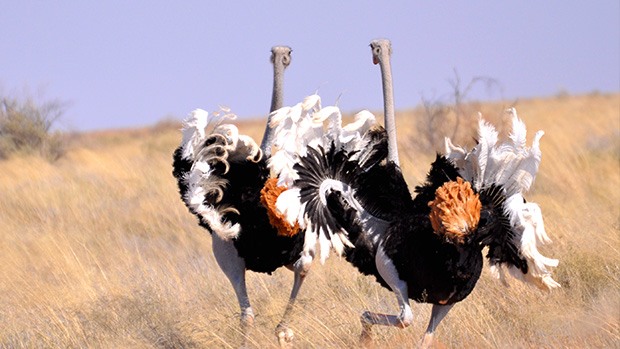
Why don’t non-functional features disappear?
So, I hear you asking, why haven’t those non-adaptive or non-functional features disappeared? Quite simply, because there’s been little reason for them to do so. It’s only if these features turn out to be particularly disadvantageous in a specific environment (so much so that creatures with that trait do not survive and so don’t pass on their genes) that they may gradually vanish from a population. Male nipples, for example, probably never had any function. They persist, however, due to the genetic blueprint shared by all human foetuses—and because there is no particular harm in them hanging around.
In addition, evolution (at least in humans) happens slowly, meaning that it can take a very long time for non-functional features to disappear. Humans have relatively few offspring, with long periods between each generation. That means that there are fewer chances for mutations that would eliminate these vestigial features, and fewer chances for those mutations to spread via natural selection.
Aussie oddities
Australian animals, as the early European explorers and naturalists found out, are pretty strange. Some of their oddities are obvious, while others are invisible to the naked eye. Many (like the flightless, but winged, emu) have features which seem to make little sense—until, that is, we place them in the context of evolutionary processes. Let’s wind up our evolutionary journey with a close-up look at two of these odd bods: blindsnakes and platypuses.
Blindsnakes
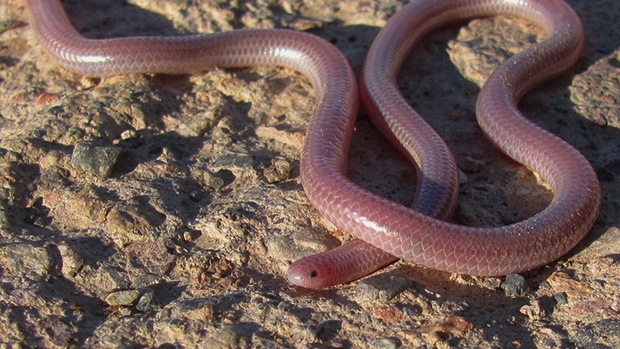
Why does a blindsnake have eyes? No, it’s not a joke, it’s a potentially puzzling scientific question—which an understanding of evolution can help answer.
Blindsnakes are small, non-venomous creatures which spend most of their lives underground. They feed on the eggs and larva of ants, and rely on their sense of smell to get them from A to B. Look at a blindsnake embryo, however, and you’ll see that it has eyes—just like a regular snake. The blindsnake’s eyes reduce in size over the course of the foetus’s development. By the time it hatches from its shell, the blindsnake is completely, well, blind.
How do we explain these odd features? They don’t seem to be terribly useful—in fact, eyes can be a point of vulnerability if angry ants decide to defend their nests by attacking them. However, if blindsnakes and normal snakes share the same ancestor, the presence of eyes on the former isn’t such a mystery. Related organisms go through similar developmental stages as each other, with species sharing common ancestors also sharing the same features as embryos. As we’ve seen, evolutionary change can only happen through the gradual modification of existing structures. So it’s not uncommon to see features in the developing embryo of an organism (such as eyes) that, later in its development, become modified (for example, reducing in size), or disappear.
It’s not only in blindsnakes that the developmental stages of the embryo resemble the embryonic stages of other closely related organisms. We humans, for example, in common with other species with whom we share ancestors and ancient genes, have a tail in the early stages of foetal development. In humans, the protruding tail has disappeared by the time we are born.
Platypus sex
Platypuses are another interesting example of a not-particularly-advantageous quirk that has come about through the vagaries of evolution. Not only are platypuses mind-bendingly strange in their physical characteristics (flippers, bill, fur) and traits (they lay eggs and produce milk), but their chromosomes, it turns out, are pretty whacky too.
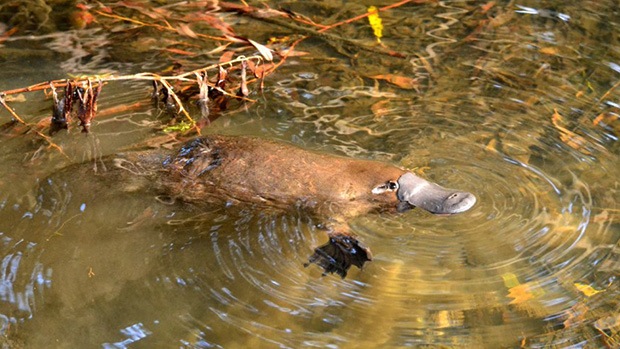
Humans each have 23 pairs of chromosomes, 22 ordinary chromosomes and one pair of sex chromosomes. It’s the sex chromosome pair which determines whether we are male or female. Two XXs make a female; an X and a Y makes a male.
Platypuses have 21 pairs of ordinary chromosomes. But, unlike humans, it’s not just two of these chromosomes which determine whether the baby platypus is a male or a female—it’s 10. A male baby platypus has five pairs of X chromosomes, while a female has five X and five Y.
In males, before sperm is formed, the 10 sex chromosomes line up in a chain, with the X and Y alternating. When the sperm is formed, all the X chromosomes move one way and all the Ys move the other, ending up in two kinds of sperm cells with 21 ordinary chromosomes, and either five Xs or five Ys. XXXXX sperm make a female, and YYYYY sperm make a male.
Why does the platypus have ten sex chromosomes when two would do perfectly well? It certainly doesn’t seem to confer any particular advantage. Indeed, it introduces more complexity and risk. Again, this apparently bizarre quirk begins to make sense in the context of evolution. By comparing all the information on all the X and Y chromosomes, scientists have been able to retrace the steps by which the platypus evolved. In the beginning, the platypus had a single pair of chromosomes, like we humans do. At some point, one of the pair swapped pieces with an ordinary pair of chromosomes, so that when they paired at meiosis GLOSSARY meiosisthe process whereby a single cell divides to produce (sex) cells containing half the original amount of genetic information this patched-together chromosome paired with both, making a chain of four sex chromosomes. One of the chromosomes in that chain swapped pieces with another pair of ordinary chromosomes to make a chain of six, and so on. Once this exchange takes place, the chromosomes can’t revert back to their original arrangement, so platypuses are stuck with this strange arrangement.
Not so strange?
From kooky chromosomes to non-functional nipples, the natural world is full of weird and wonderful quirks. Yet just like those awe-inspiring examples of elegant adaptation we like to marvel over, these apparent oddities have been thrown up by chance variation, constrained by existing structures and genetic blueprints and, as long as they aren’t doing significant harm, passed down to successive generations via heredity. Seen in this light, it seems these ‘odd arrangements and funny solutions’, as Stephen Jay Gould called them, might not be so weird after all.






